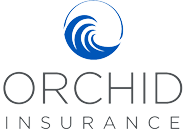First the lights started flickering in her living room the other night last week. Then the wind ripped a hole through the roof of Danielle Cherry’s two-bedroom home along Highway 427 in Prairieville, La.
In the weeks ahead, Cherry and residents in Louisiana and other states hit by Hurricane Ida will be facing another challenge: navigating insurance. While many answers can be found in their policies, coverage changes are often buried in renewal paperwork that homeowners may not understand or even read.
“We encourage all homeowners to immediately contact their agent or insurance carrier to report any damage,” said Billy Breaux, Gulf Territory Sales Manager, with Orchid Insurance, a specialty underwriter of coastal risks from Texas to Massachusetts. “Most policies require homeowners to protect their property from further damage after a storm – so you may need to make temporary repairs.”
Breaux said policyholders should keep the receipts for any repairs. The insurance policy may have a provision for reimbursement or counting money spent toward the deductible. By taking some simple steps in the insurance claims process, Breaux said homeowners can expect to receive a fair settlement. These include:
- Keep records during the process. Immediately start a notebook or document listing contacts with your insurance company.
- Taking pictures or videos of the damage, both to the home and the contents.
- Make sure that the agent and insurance company have the correct information to contact a homeowner who may have had to evacuate or is unable to receive information at home.
- Attempt to separate damaged personal property items from undamaged items in insurance claims, but do not throw them away. Keeping these items will help the insurance claims adjuster better assist in completing an inventory of the items lost.
Early estimates figure almost $18 billion in damage will be covered by insurers, according to Karen Clark & Co., a risk modeling firm. The estimate includes privately insured damage to vehicles, houses, and commercial and industrial properties, but does not include boats, offshore properties, or National Flood Insurance Program losses.
Peak Hurricane Season
While Hurricane Ida is no longer a threat, the season for major storms is far from complete. Even though many perils are covered under a standard homeowner’s policy, some weather-related events qualify for coverage differently – and some not at all.
“Now is the time for agents to double-check with their clients and review a policy,” said Breaux. “Make sure your client understands what damage caused by weather events is covered and the different deductibles that apply depending on the particular cause of the loss.”
The Atlantic hurricane season started June 1 and runs through Nov. 30. The peak, however, is September. Last year, there were 30 storms that were named — a record — 12 of which made landfall in the U.S.
Coastal Solutions
Since Orchid opened its doors in 1998, the leading specialty underwriter of catastrophe-exposed insurance for residential and commercial properties has provided coverage during more than 70 named storms in some of the riskiest places on earth.
“We protect the homeowners and business owners who really need insurance the most – the hurricane-prone areas where many carriers are not willing to take on such risk,” said Breaux. “Much of our business today includes difficult and high-capacity risks, some without restrictions on distance-to-coast in regions that have a shared history for severe weather.”
Orchid Underwriters Insurance, LLC, is the First Choice for catastrophic-exposed property insurance. If you need flexible products, fast processes, expert underwriting and competitive pricing, superior customer service is a phone call away at 1-866-370-6505 or visit https://orchidinsurance.com/


